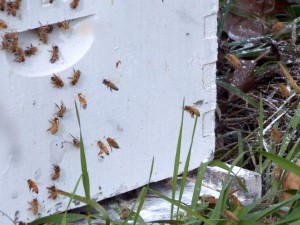 And now, another lesson from a very bad beekeeper...
And now, another lesson from a very bad beekeeper...
Sugaring bees for mite control is a great alternative to chemical treatments if the mite count is manageable. In the battle of bees vs Varroa Mites my weapon of choice; powdered sugar. I calculate the mite load by capturing a couple hundred bees and placing them inside a jar with a few tablespoons of powdered sugar. The jar is fitted with a screen placed over the mouth. The bees are shaken vigorously to loosen the mites clinging to them. The mites fall through the screen lid, onto a sheet of white paper (they're easy to see against the white background) for counting. A quick calculation gives the mite load for the hive. This calculation determines if I need to treat the bees aggressively (for a large infestation) or if the sugar will take care of the problem. I'm reluctant to use chemicals for treating Varroa Mites because it could cause resistance or weaken the bees.
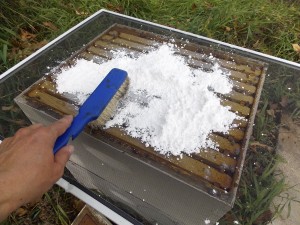 Using an old window screen, placed over the hive body, I dump a pound of powdered sugar on top. It's important to have the smoker ready to force the bees away from the screen. Using a bee brush to gently spread the sugar across the screen so it falls between the frames, I continue to apply smoke. You don't want the bees clinging to the screen because the brush will damage the bee's legs, sometimes amputating them.
Using an old window screen, placed over the hive body, I dump a pound of powdered sugar on top. It's important to have the smoker ready to force the bees away from the screen. Using a bee brush to gently spread the sugar across the screen so it falls between the frames, I continue to apply smoke. You don't want the bees clinging to the screen because the brush will damage the bee's legs, sometimes amputating them.
The sugar dust clings to the bees causing the mites to fall off or get groomed off by other bees. I use a screened bottom board which the mites fall through. I repeat the sugaring process two to three times in the fall.
Once the hive's been dusted and sealed back up again the jarred bees are let loose to fly back inside the hive. They're angry and unhappy after being shaken. Never free the bees from the jar before all the frames are sugared or they'll work the rest of the hive into a fervor. You don't want to work with agitated bees, I've learned this the hard way. Bee venom supposedly cures arthritis, I don't have arthritis but I think I'd prefer it to being stung seven times in the hand. Learning new things is important, I just wish I'd learn before it becomes a painful reality.
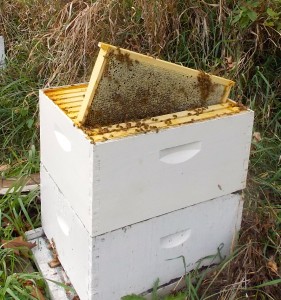
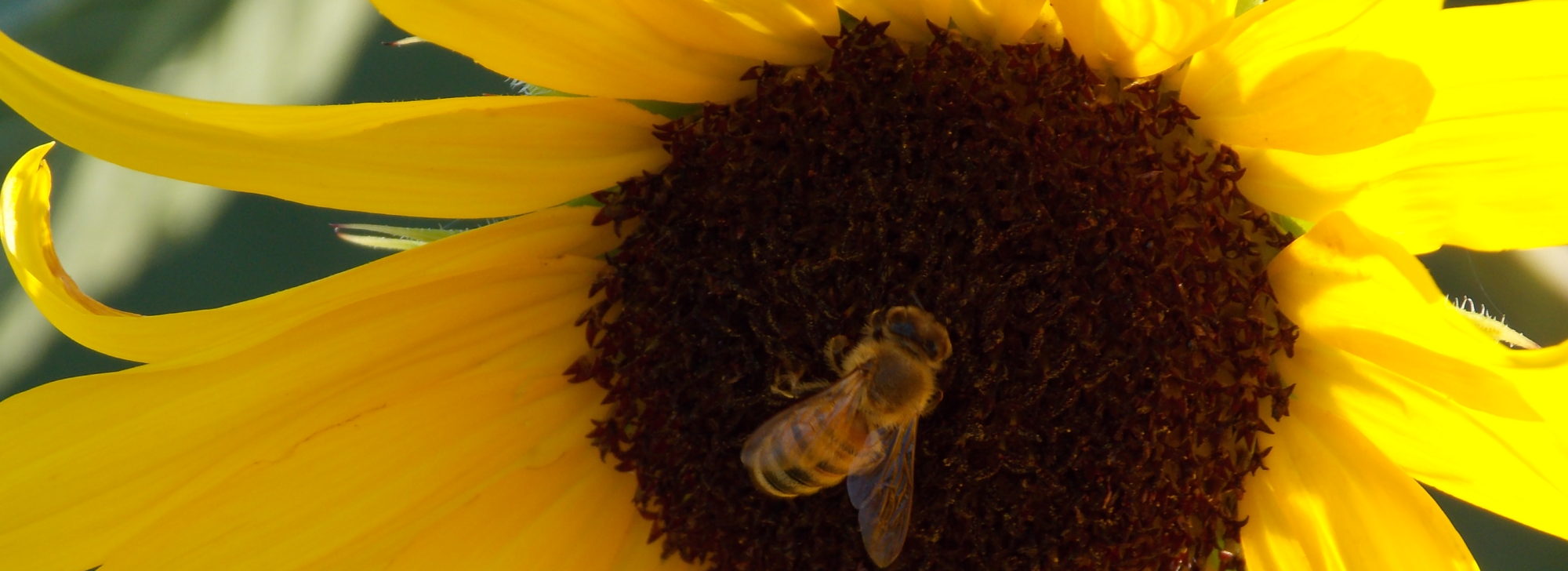

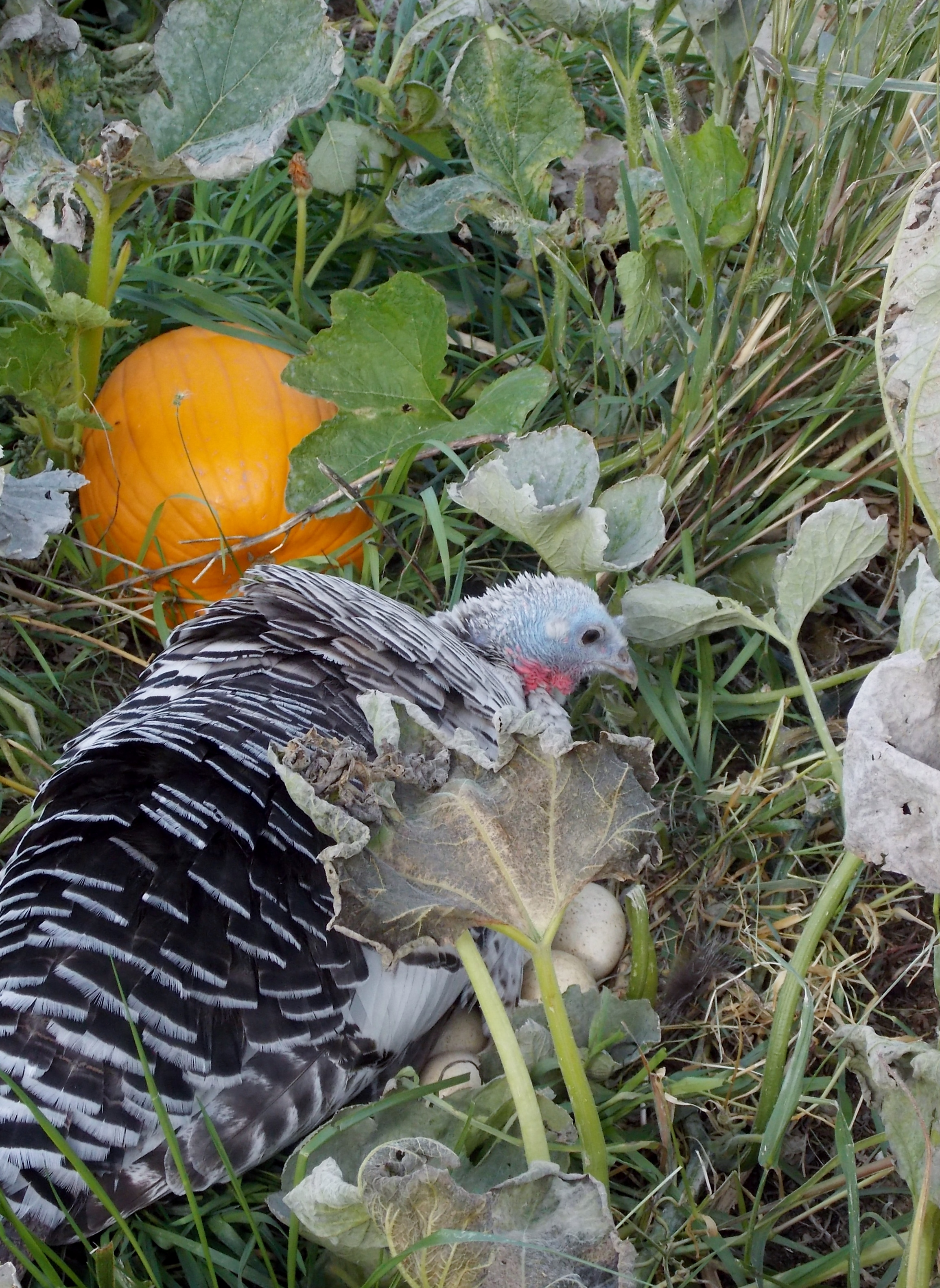
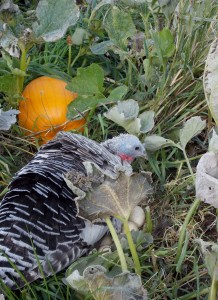
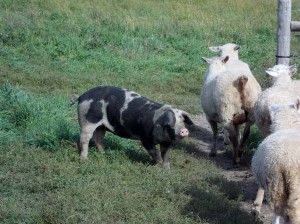 The oak tree along the lane is dropping bushels of acorn that go uncollected. The oak in the pasture is dropping a heavy crop for the pigs to feast on. They've gleaned the fallen nuts leaving the ground underneath bare. One pig in particular stands sentry, he won't let the sheep near the tree. He doesn't realize the sheep want sweet clover not bitter acorns. Between the pumpkins, clovers, apples, and nuts the pigs diet is diverse. Their commercial feed goes untouched when there's so much they can harvest themselves. This is one of the benefits of
The oak tree along the lane is dropping bushels of acorn that go uncollected. The oak in the pasture is dropping a heavy crop for the pigs to feast on. They've gleaned the fallen nuts leaving the ground underneath bare. One pig in particular stands sentry, he won't let the sheep near the tree. He doesn't realize the sheep want sweet clover not bitter acorns. Between the pumpkins, clovers, apples, and nuts the pigs diet is diverse. Their commercial feed goes untouched when there's so much they can harvest themselves. This is one of the benefits of